 DISCUSSION: What is a work? John Dante Prevedini leads a discussion about The performing artist as co-creator, including contributions from Halida Dinova, Yekaterina Lebedeva, Béla Hartmann, David Arditti and Stephen Francis Vasta.
DISCUSSION: What is a work? John Dante Prevedini leads a discussion about The performing artist as co-creator, including contributions from Halida Dinova, Yekaterina Lebedeva, Béla Hartmann, David Arditti and Stephen Francis Vasta.
- Victoria de los Ángeles
- electroacoustic
- Tall Poppies Records
- Percy Young
- Gioachino Rossini
- Andrew Schartmann's Musical Tidbits
- Arnold Cooke
- Napoleonic Wars
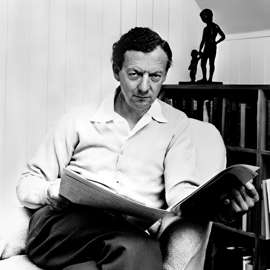 SPONSORED: Ensemble. Last Gasp of Boyhood. Roderic Dunnett investigates Jubilee Opera's A Time There Was for the Benjamin Britten centenary.
SPONSORED: Ensemble. Last Gasp of Boyhood. Roderic Dunnett investigates Jubilee Opera's A Time There Was for the Benjamin Britten centenary.
All sponsored features >>
Energising Freshness and Exuberance
MALCOLM MILLER listens to string quartets by three émigré Austrian-born composers
A fascinating glimpse into the vivid musical and cultural lives of three émigré Austrian-born composers was offered in the superb concert, entitled 'Echo of the Unheard', of seldom played string quartets by Walter Bricht (1904-1970), Julius Bürger (1897-1995) and Hans Gál (1890-1987), including a modern premiere, on 22 June 2023 at the Ehrbarsaal in Vienna.
The concert, given by the Ineo Quartet at the chamber music hall of the Palais Ehrbar on Vienna's Mühlgasse, once the site of piano manufacturers, attracted a select audience to this eighth concert in an on-going series that began in 2018, presented by the Exilarte Centre of the University of Music and Performing Arts Vienna. The evening was introduced by Professor Gerold Gruber, founder Director of the Exilarte Centre, who explained its mission to preserve, research, perform and disseminate music by composers persecuted and suppressed by the Nazis, many of whom either perished or emigrated during the Holocaust. To date the Centre has received archives from numerous composers' estates and this concert series is but one of their projects, alongside CDs, exhibitions, book series and music editions.
The young and promising Ineo Quartet - Nadia Kalmykova and Ljuba Kalmykova, violins, Yan-Lok Hoi, viola and Constantin Paul Siepermann, cello, all formidable and award-winning young performers - displayed admirable involvement and passion in their performances. As an ensemble they combined to convey the emotional and intellectual depth of the three works, each composed in the late 1960s, at a temporal remove from the harrowing experiences of the war years, yet dealing in some sense with the emotions of that period.
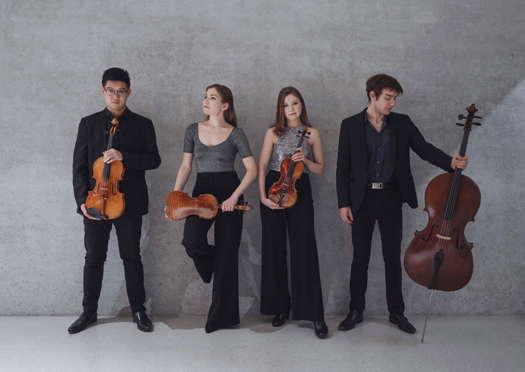
The Ineo Quartet
Walter Bricht, whose music is perhaps the least well known of the three, was a highly talented pianist and composer from Vienna who produced a prolific output until he was forced to emigrate in 1938. In the USA he taught at Indiana University where he composed three more works in the 1960s, amongst which is the Chaconne [Woo 24] of 1967. In this work Bricht reinterprets the traditional chaconne bass as a melodic sequence of three motifs shared amongst the instruments and often interwoven into the web of the texture. The chaconne's familiar falling intervals are reshaped as a rising leap and falling step, the contour of which is both arresting and pervasive throughout the varied sections of this extended movement.
One sensed Bricht's versatile and fluent grasp of the string quartet medium as well as an echo of the Modernist style of his Viennese period. Indeed, the work opens with a stridently dissonant version of the chaconne, followed by variations which are in turn richly lyrical, highly chromatic, contrapuntal, calming and consonant, and - following a strident cello glissando - highly contrasted, using pizzicato textures throughout and unisons. As well as technically adept the music is intensely emotional, imbued with a power, almost an anger, evident in the orchestral fullness of the variegated shades of texture.
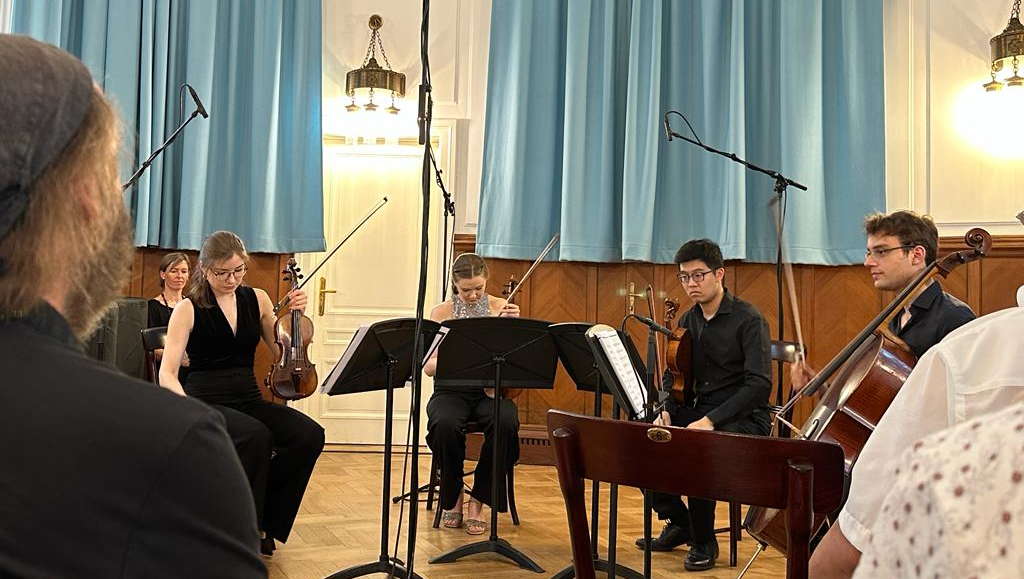
The Ineo Quartet performing in Vienna on 22 June. Photo © 2023 Bea Lewkowicz
Also varied in string writing, experimenting with groupings and different textures, was the next work, the 2nd Quartet by Julius Bürger (1897-1995) which received a compelling account. It is a four movement work in a unique voice, highly chromatic yet each movement ending on a tonal cadence, a type of expressionism redolent of Schreker with whom Bürger studied from 1919 in Vienna and later in Berlin.
Bürger's fascinating oeuvre is still unfamiliar yet he has enjoyed a notable revival over the last two decades, with performances and recordings. He belongs to the group of refugee musicians such as Hans Gál and Berthold Goldschmidt, who already enjoyed a promising career before the Nazi accession to power. A Schreker student like Goldschmidt, he had worked in the USA as assistant at the Metropolitan Opera, before conducting and composing in Berlin radio in the 30s till 1933, when in Austria he worked for the BBC, producing 'potpourri' arrangements. He only visited England on occasion, yet in 1938 he found refuge in the USA, working for CBS and later the Met.
In the 1980s he was awarded a major prize for his early compositions and, again like Goldschmidt, lived to see a revival of his work in the 1990s, with recordings and publications, championed by writers and scholars including the late Malcolm MacDonald and more recently the record producer Michael Haas, Senior Researcher at Exilarte, who continues to promote his works following the acquisition of his archive by Exilarte.
In this 2nd string quartet (1968), Bürger displays a large scale musical imagination. The sonata form first movement contrasted a falling shimmery theme with a lyrical rising second subject, presented in turn by all four players. The quartet seemed well in control, testing out textures in the unfamiliar idiom, yet always together, sharing, listening and responding to each other, bringing some telling colours. Notable were the full throated cello lines, velvety viola and the silvery violin of the first movement.
The slow movement comprised long-breathed lines, high in the range, the chromaticism always leading tonal cadences, contrasted by the faster third movement, a breezy scherzo full of textural interest and lightness. It was almost a moto perpetuum, with rhythmic lilt, tremolos and effects like col legno, offering a piquant, almost jazzy mood. The fuller finale projected an almost orchestral sound, a variation set rich in counterpoint.
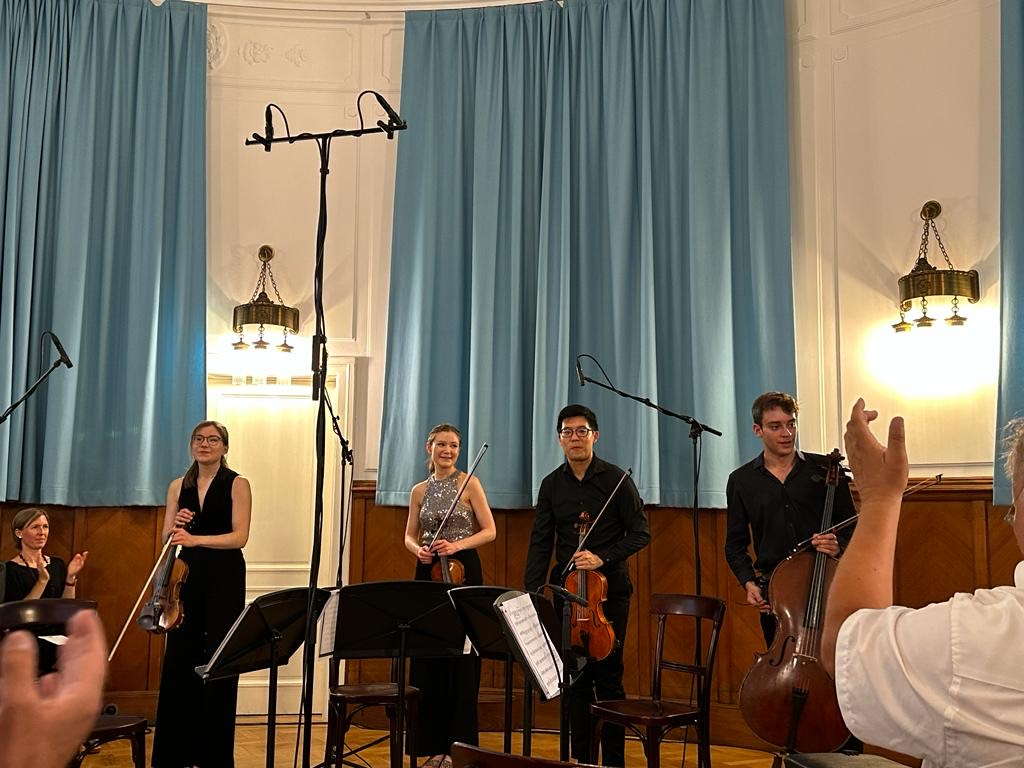
The Ineo Quartet in Vienna on 22 June. Photo © 2023 Bea Lewkowicz
Also compelling and well-crafted was the 2nd Quartet (1970) by Hans Gál whose oeuvre has become more widely known in recent years through recordings and performances. In this beautifully polished work, the first and second violinists swapped roles, helping to project the work's clear formal outlines with panache. The quartet made much of the opening movement's stark contrast of playfully rhythmic and buoyant first subject and reflective, lyrically rich second subject. There was plenty of colour to the scherzo-esque second movement, its spiky theme coloured by trills, treated contrapuntally, its airy lilting character imbued with a sense of Till Eulenspiegel-ish comedy.
The expressive core was the third movement, here beautifully rendered, each player taking their turn with the eloquently plangent theme, the calm tonality tinged with nostalgia reminiscent of the composer's Huyton Suite, composed during his period of internment in 1940, with a Tierce de Picardie conclusion adding a hint of brighter optimism. The skimpish rondo theme of the Finale was highly characterised, returning through contrapuntal episodes, in which the quartet negotiated the mercurial changes of key and gesture with aplomb, as for instance where Gál interrupts his jolly flow with some rhetorical gesture switching moods. The movement rounded off the work and the concert as a whole, with energising freshness and exuberance.
Much credit is due to Professor Gerold Gruber who, together with Michael Haas and the Exilarte team, has facilitated the exposure of the music of these and other émigrés to an ever widening audience, especially well presented by young musicians such as the Ineo, whose performances are available online - on Exilarte's YouTube page - and whose regular concert repertoire is sure to be enriched by new discoveries and re-discoveries.
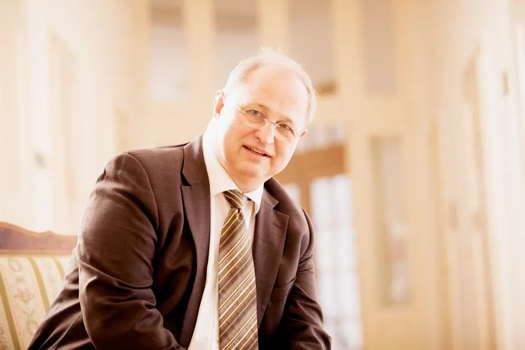
Gerold Gruber. Photo © Julia Wesely
With future concerts and exhibitions at their premises in the University of Music and Performing Arts and other venues, a visit to the Exilarte Centre would offer a worthwhile highlight of any trip to Vienna in the near future.
Copyright © 2 July 2023
Malcolm Miller,
London, UK



